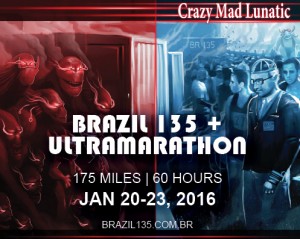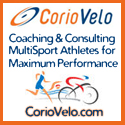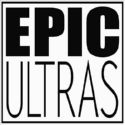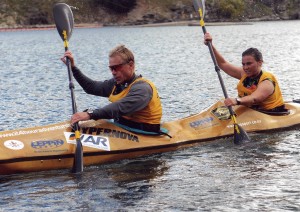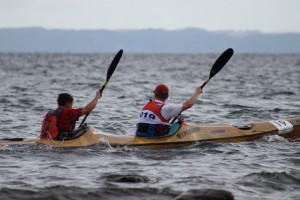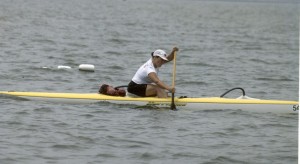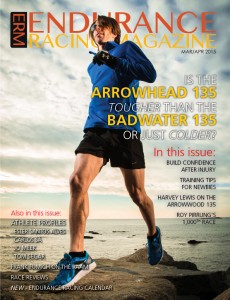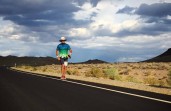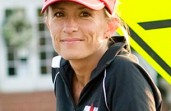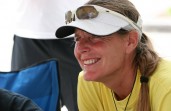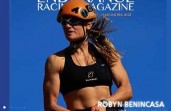ERM caught up with Christine Couldrey from New Zealand who came to the U.S. and fell in love with the sport of endurance kayaking. While Christine enjoys time on the water she is also an accomplished triathlete.
“When I race I am fiercely competitive, I always do my best and make sure I beat as many people as possible, but I totally only race for myself, it’s about self satisfaction, not really winning or getting glory.”
–Christine Couldrey
ERM: This is exciting to do an article on an endurance athlete who is a long distance kayaker! What are the two biggest endurance kayaking races that you think are worth mentioning?
Christine: I would say 2 races come to mind, the Texas Water Safari (261 mile race to Seadrift from the headwaters of the San Marcos River) and the Yukon River Quest (715km).
ERM: So how did you get into endurance racing?
Christine: I was the world’s least sporty people growing up, my teachers used to write in my school reports that I should stick to academic and musical interests instead of sporting interests (not that I had any sporting interests). I didn’t really do any sports until my first year of university (I started university just before I turned 17). I put huge pressure on myself to perform well and be the best even though I was 2 years younger than everyone else in the class and hadn’t done my last year of high school. The pressure built up and one Saturday I needed to do something to release it and I went for a 10km bike ride and felt so much better that every time I felt bad I got on the bike. A couple of years later I did my first sprint triathlon, and while I couldn’t run the 2km run without some walking, I was instantly hooked, because finally I realized could compete in a sport! But unlike most people who want to see how fast they can go, I only ever wanted to see how far I could go….so over the course of 7 or 8 years, I built up to doing an Ironman.
ERM: How did you get to kayaking?
Christine: I was an established triathlete by the time I moved to the United States in 1999. I got involved with Odyssey Adventure Racing and hung out with them for a few years before doing the Double IRON. I also helped put on adventure races which involved kayaking and eventually took the plunge and participated in some of them. It was immediately obvious that learning to paddle would do me a lot of good. Through the adventure racing world I met my friend Caroline Brosius who had been a nationally ranked sprint kayaker and at the time was probably the best female outrigger canoe paddler on the east coast (and she did adventure races). Caroline suggested I come down to the Washington D.C. Canoe Club and train with her over the winter. All winter (in a building with no heating and usually temperatures in the 20’s) we sat on kayaking ergs and lifted weights. By the time spring came around and the outrigger canoes were in the water I decided that I needed to get in one to see what it was like. After all that training in the freezing cold surely there had to be something as a reward! Turns out I loved out rigger canoeing, and while much of it was initially for adventure racing I became hooked to paddling itself – and it turns out I wasn’t too bad at it. One thing I really loved about the paddling was that in the middle of Washington D.C .you could feel completely free, you could see all the cars stuck in traffic in the evenings while you paddled on the peaceful Potomac River. Coming from the country in New Zealand, I really appreciated that break from the city.
ERM: So then what happened? Did you break out on your own?
Christine: Well an interesting opportunity presented itself! I met the husband of one of the women on the outrigger team, Mitch Potter, who not only was a handy sprint kayaker, but also paddled marathon canoe and 20 years earlier had been on of the top 20 white water paddlers in the USA. Mitch also happened to be a triathlete, which is why I was introduced to in the first place. We started riding and running together and then 6 months later in the dead of winter, on a warm, totally clear night he asked if I wanted to go for a paddle in his racing canoe. The water temperature was only just above freezing and I was scared stiff that we would fall in as I have terrible balance and have no natural ability at any sport. So I sat very still and centered and paddled. It was very cool and Mitch thought that I did well. In the spring he asked me if I would paddle the General Clinton race with him (70 miles in upstate New York). To train for the race, I paddled nearly every day either with Mitch or Caroline and totally had a great race.
ERM: So you were in the second position in these races right?
Christine: Right. After the General Clinton race, it was time for me to learn to steer the marathon canoe, and I will say that it came totally naturally and steering that canoe is my favorite sport in the entire world. It is so much about finess and not slowing the boat down. Even though we don’t have the sport of marathon canoing here in New Zealand, I get into the boat and sometimes it feels like I don’t actually need to steer, I can just guide the boat with my thoughts (I know that sounds funny…but it’s true, there must be subtle movements that I do as I think that does the steering).
ERM: So it sounds like while you were in the U.S. you did enough races to get the bug to race.
Christine: Mitch and I have done the General Clinton 2 times but my favorite race is the Adirondac Canoe Classic (90 miler), the first race that I steered after only 5 weeks of steering practice. Since that first steering experience I have returned twice to the United States to compete in the race again, and in 2009 Mitch and I won the mixed division.
I have also done some long distance kayaking since coming back to New Zealand, winning the first Trans Lake Taupo kayak race, (in combination with a local Paul Dutton), which is the longest Kayaking race in NZ.
ERM: So I ask this question of all my athletes – what makes you an endurance athlete – because it’s not all about ability but how strong your mind is.
Christine: You know, while I was with Oddessy Adventure, you see these athletes and they seemed so normal, but they accomplished these tremendous feats of endurance. I wanted to see if I could be that physically and mentally strong. Turns out that is actually where my strength lies, for I will never be fast over a short distance, but I don’t slow down for at least 24 hours. And without wanting to boast, I am one of the mentally toughest people I know. When the going gets tough, when the conditions get nasty, that only strengthens my resolve.
So basically, I have no ability to quit – it’s just not an option – even in a 2 person outrigger canoe race in the ocean where I was so sea sick I vomited for 6 out of the 6 and a half hour race (which we won). I never thought of quitting once – and believe me when I say that being sea sick is absolutely terrible.
Keeping your brain in the right place is vitally important in ultra distance racing. I have lots of tricks I use.
ERM: So tell us more about the marathon canoes and how you learned how to use them.
Christine:The marathon canoes that we race in are fairly tippy (if you havent done any paddling in the past). My first experience in a true racing marathon canoe was both a terrifying and exhilarating experience. In the middle of winter in Washington D.C. The air temperature was fairly warm but water temperature was very cold, it was dark but super clear. Mitch and I had just finished our weekly 9 mile run and he asked if I wanted to go for a short paddle. I was scared, very scared that we would fall in because I dont have great natural balance. Fortunately Mitch has a lot of balance about keeping a boat right side up from white water paddling. I
got into the boat so very very carefully and sat as centered as I possible could, making sure I didnt move my weight side to side, in the front of the boat its so narrow that where you sit is about as wide as your hips and where your feet are its only as wide as your feet. We paddled around a little and past what Mitch called the wall of death a concrete wall where it would be impossible to get out if we fell in..that did little to calm my fears but I tried to stay relaxed and rock the boat as little as possible. Mitch later told me how balanced and relaxed I seemed in the boat.thats not what it felt like at the time.
When spring came we started paddling and there was still much to learn about balance not only when paddling in a straight line, but also when leaning the boat in order to go around corners (both front and back have to do this in a very coordinated fashion). I struggled and fought the leaning subconciously for a long time; my brain was so focused on keeping this (at the time I thought ) very tippy boat upright. But with time I relaxed and now we often lean the boat in a very very balanced controlled way) right on edge almost up to the gunnles.
Some people pick up the balance of tippy boats easily, for me it doesnt come easily, but rather with lots and lots and lots of practice, getting incrementally better at the propriception. I can now paddle the tippiest of kayaks but its not been an easy road. Fortuantely though it is like riding a bike, once learn the muscles and nerves just know how to do it. Now the marathon canoe seems a very stable boat. Oh how things change!
ERM: Financially, you may not want to get too detailed, but do you budget for your competitions each year?
Christine: Money is most definitely a limiting factory (In New Zealand we get 4-5 weeks vacation a year so time is less of a problem). But there is no marathon canoeing in here, and worse there are no ultra distances triathlons! Getting bikes and support crews overseas is often cost prohibitive for me and its the reason that I haven’t done many of the races I want to. I don’t set a specific budget each year, but I do make decisions on what races I can and can’t afford to do – the amount of money spent needs to be value for money. There are some races that I won’t do because I feel like the cost is just too much.
In terms of endurance running, least we have the Northburn100, the race (in its second year).
To learn more about Christine, see her race write ups from the past. Odessey Triple IRON http://www.4ar.info/diaries_comments.php?id=1850_0_4_0_C


